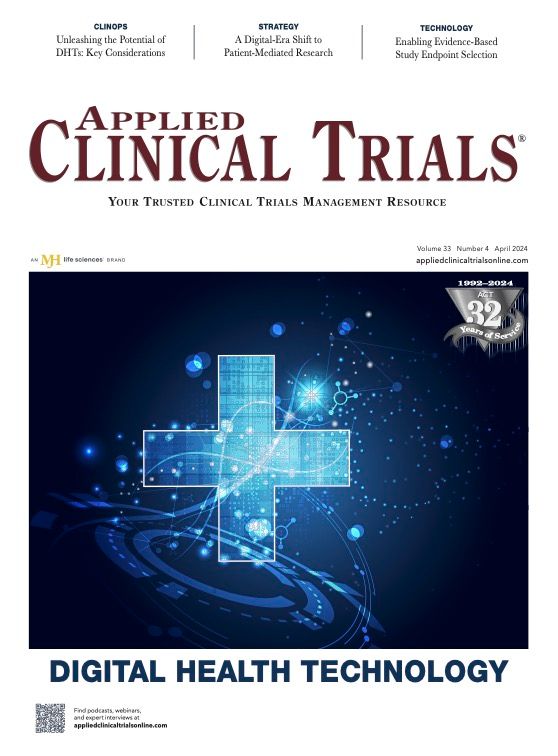Patient Centricity: The Journey Matters
Five proactive steps industry can take to optimize a patient's clinical trial experience.

You’re setting forth on a long journey; you have your bags packed, tickets in hand, and what you think is a complete and clear itinerary. But, when you reach the airport, your gate changes, the flight is diverted, and when you finally arrive at your hotel (without your luggage), there’s no record of your reservation. You’re exhausted, annoyed, and contemplating abandoning your journey.
This anecdote reflects the journey of many clinical trial participants, who enter a trial thinking they have the information they need and a clear path forward, only to find the process far more onerous than they ever imagined. We all know how the story ends—patients are marginally engaged or abandon the study all together—which can impact data quality, extend timelines, drive up costs, and delay the introduction of potentially life-changing therapies.
We must find a better way, and it starts with optimizing a patient’s clinical trial journey. In recent years many have jumped on the patient-centricity and engagement bandwagon, without really changing how patients are treated in a trial.
Engagement isn’t just a badge or a reminder; it can and must go deeper. Supporting the patient’s journey through a trial is a more fundamental way to treat patients as partners and active participants. It leads to sustained engagement, retention, and ultimately higher rates of data-capture compliance.
So, what proactive steps can we take to optimize a patient’s clinical trial journey?
1. Involve patients more meaningfully in planning the journey. Incorporating the patient’s voice should start with trial design and development. Patients want to provide input on how trials are designed from the start, not retrofitted into a rigorous protocol into which they contributed little or no guidance. This includes input on how data is gathered and captured in a way that is intuitive and convenient for patients, while ensuring scientific validity.
2. Deliver an experience that is not just frictionless, but delightful. The technology used in clinical trials, including electronic clinical outcome assessment (eCOA)/electronic patient-reported outcome (ePRO), enters into an intense competitive arena: the quest of people’s time and attention. It’s not enough to put a paper form on a smartphone or tablet and expect patients to fill it out. We have to look carefully at what the patient expects in their daily lives. The digital experience must be delightful and rewarding, and on par with those delivered by everyday consumer applications. The goal is to make data entry and engagement become a “want to do” versus a “have to do” in a patient’s already busy life.
3. Provide an all-in-one digital home. Clinical trial patients lead busy lives, all while often battling serious and debilitating illnesses. Participating in clinical trials involves numerous appointments, volumes of forms, and materials, which are often paper-based, and seemingly endless documentation. Modern eCOA/ePRO can play an important role in making it easier and less stressful to take part in a study by functioning as an all-in-one digital home for the study, giving patients all the information, instructions, and resources they need in a single place.
4. Reward engagement and express appreciation. We must ensure that patients feel valued and appreciated for their many sacrifices and contributions and understand that the journey is worthwhile not only for them but for generations to follow.
The first step is to thank the patient and show them they are appreciated. There are many creative opportunities to express thanks; these can include milestone and progress reports, and sharing results when the study is completed. AI and machine learning tools also offer new opportunities to be even more creative about determining the most appropriate way and time to thank and encourage participants.
5. Deliver unexpected value and benefits. When traveling, we all enjoy unexpected, pleasant surprises, such as a hotel room upgrade or a complimentary meal. Clinical trial patients are no different in their journey, and modern eCOA/ePRO systems enable opportunities to give patients unexpected benefits and value that continue even after a study has concluded. For example, sponsors may offer patients the ability to continue using the app to input and visualize their data as part of their own healthcare path. Participants in the 100 for Parkinson’s study valued the ability to continue to access their own data, and some used the app for years after the end of the study.
In addition, we are starting to see some clinical trial sponsors, such as Pfizer, commit to returning individual data—in accessible and understandable formats—to participants at the conclusion of a trial. This personalized data can help patients and their healthcare providers make better decisions about care and treatment beyond participation in the clinical trial.
The key to success for eCOA/ePRO is a human-centric focus from the ground up. Digital technology is most effective when it starts with human relationships and behaviors and then introduces technology into the equation to enhance and advance outcomes. To achieve this goal, however, it is essential to seek patients’ input at the early stages of design and development and incorporate it in a way that optimizes the user experience and ensures effective data collection. Without this commitment to truly understanding the needs of patients as individuals, clinical trial technology will struggle to fulfill its full potential.
Bruce Hellman is Chief Patient Officer and Co-Founder at uMotif. He can be reached at bruce@umotif.com

Reaching Diverse Patient Populations With Personalized Treatment Methods
January 20th 2025Daejin Abidoye, head of solid tumors, oncology development, AbbVie, discusses a number of topics around diversity in clinical research including industry’s greatest challenges in reaching diverse patient populations, personalized treatment methods, recruitment strategies, and more.
What Can ClinOps Learn from Pre-Clinical?
August 10th 2021Dr. Hanne Bak, Senior Vice President of Preclinical Manufacturing and Process Development at Regeneron speaks about her role at the company as well as their work with monoclonal antibodies, the regulatory side of manufacturing, and more.